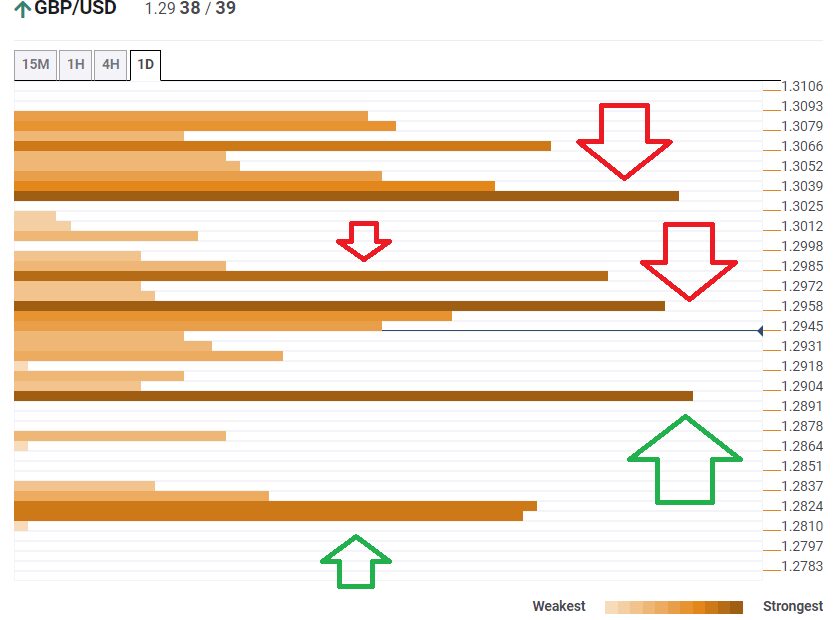Why You Should Believe In A Santa Claus Rally For Markets

Since many investors are already invested in the stock market, how can one capitalize on the TOY? Older and conservative investors who are not 100% exposed to the stock market could increase exposure to the market during this time of the year to bump up their annual returns. The trade minimally increases ones market risk exposure while capturing a large percent of the average annual returns. The trade requires proper timing, a tax deferred account, minimal trading costs and the use of larger liquid funds to keep the bid-ask spread low. One also needs to understand the returns presented are average returns and individual years vary greatly.
During the seven-day period, the S&P 500 gained 7.5%, although it would crash again in the first two months of 2009 before bottoming out on March 9. Our analysis cited above suggests there is only a marginally positive opportunity in trading the so-called Santa Claus rally. The data that we examined shows a roughly 60-65% chance of a positive week in the run up to Dec. 25. However, the risk-reward balance is decidedly skewed to the negative side. Of the average winning day in the period, the return was +1.85%, while the average losing day was -3.28%.
Understanding the Santa Claus Rally That Wasn’t
Investments in commodities or commodity-linked securities may not be suitable for all investors. 1 All figures reflect S&P 500 (SPX) daily closing prices, December 1990 through December 2021. “Christmas” refers to the day the markets close in observance of the holiday, not December 25. In the meantime, there are shorter-term moves in the markets this month that don’t have anything to do with Santa Claus, or even a rally.
Dow tumbles on recession fears. So much for a Santa Claus rally – CNN
Dow tumbles on recession fears. So much for a Santa Claus rally.
Posted: Thu, 15 Dec 2022 08:00:00 GMT [source]
First is the percent of the annual return captured in these short time frames. Second, the ratio of the average daily returns within the examined timeframe divided by the average daily return of the SP 500 index for the full year. A ratio of “3.0” means the average daily return during the period is 3 times the average daily return of the SP500 index the entire year. We have seen journalist state the seasonal effects appear to be diminishing after presenting the raw numbers.
Premium Investing Services
The first suggests the Santa Claus rally occurs in the week leading up to and ending with Dec. 24, Christmas Eve. The other scenario suggests the Santa Claus rally occurs in the week following Christmas, up to and including the first two trading days of the New Year. After studying the returns of both scenarios, we believe the Santa Claus rally, to the extent that it exists, occurs in the week leading up to Christmas. Several theories try to explain the Santa Claus rally, including investor optimism fueled by the holiday spirit, increased holiday shopping, and the investing of holiday bonuses.
- Get stock recommendations, portfolio guidance, and more from The Motley Fool’s premium services.
- The endorsement does not guarantee the same or similar experience.
- Interestingly, the Santa Claus rally is observed in stock markets around the world.
- Historically, during a Santa Claus Rally, the S&P 500 has risen an average of 1.3% but it doesn’t happen every year so it isn’t 100% predictable.
- The percent of annual returns and the daily ratios allow us to see the relative numbers.
- The third day before the holiday had the highest median return, but it was an up day only 62.5% of the time.
And of course, past performance is no guarantee of future performance. A Santa Claus rally is a jump in stock prices, observed in the final five trading days of the year, typically starting a day after Christmas and going into the first few trading days of the New Year. Historically, this seven-day period has brought good news for investors, giving them another reason to cheer during the holiday season. A Santa https://day-trading.info/what-is-the-difference-between-data-and-3/ Claus rally is a market theory describing when the stock market surges during the final week of December, extending into the following two trading days of the new year. There are a number of theories as to why this happens—from tax considerations to investors investing holiday bonuses to institutional investors taking a respite. But the jury is still out on whether this and other seasonal hypotheses hold water.
Get the InvestorsObserver App
Also, many employees receive year-end bonuses that can be invested in the market. Some of the theories that aim to explain both the Santa Claus rally and the January Effect have received criticism. https://currency-trading.org/education/understanding-technical-analysis/ Like the jolly bearded man it is named after, no one knows the definitive reason why a Santa Claus Rally arrives in December and often gifts investors with positive returns through the holidays.
Here’s why investors can forget a Santa Claus rally for the stock market this year, according to Citigroup – MarketWatch
Here’s why investors can forget a Santa Claus rally for the stock market this year, according to Citigroup.
Posted: Sat, 24 Sep 2022 07:00:00 GMT [source]
While I hope to clear up some of the confusion, our main focus should be on the actual market action to see if a seasonal effect truly exists and more importantly is it tradable. The explanations for the stock market seasonal tendencies are many and we will touch on them, but consistent tradable tendencies are what we are looking for. Since varying definitions exist, we need to frame the discussion. According to The Wall Street https://trading-market.org/merrill-lynch-wealth-management-review/ Journal, historically, the S&P 500, the Dow Jones Industrial Average (DJIA), and the Nasdaq Composite have risen about 80% of the time during the Santa Claus rally period. The average returns for the S&P 500, the Dow, and the Nasdaq Composite over the period have been 1.3%, 1.4%, and 1.8%, respectively. There’s also the argument that holiday shopping can bolster businesses’ bottom lines and help boost stock prices.
Santa Claus rally hasn’t come yet. There’s still time, but will it even matter for stocks?
Morgan offers insights, expertise and tools to help you reach your goals. For a better experience, download the Chase app for your iPhone or Android. Using an updated version will help protect your accounts and provide a better experience. “When you think of a Santa Claus rally, it’s all about anticipating or looking forward,” said Terry DuFrene, global investment specialist at J.P. “That is meaningful,” Batnick said of the difference in returns and positivity rate.

Hirsch’s theory came from his research of the Standard and Poor’s 500 (S&P 500) performance between 1950 and 1971 over the seven-day period stated above. He found that during this time, the index went up an average of 1.5%. Moreover, the market has been positive in 34 of the last 45 years, just over 75%. Generally, the Santa Claus rally refers to the stock market’s history of rising over the last five trading days of the year and the first two market days of the new year. For the average return of the week leading up to Christmas, the so-called Santa Claus rally, we calculated a +0.385% total return, with 13 winning weeks, five losing weeks, and two unchanged weeks. More important, the average winning week gave a +1.85% return, while the losing weeks averaged a -3.28% return, skewing the risk/reward ratio against the trade (being long S&P 500).
